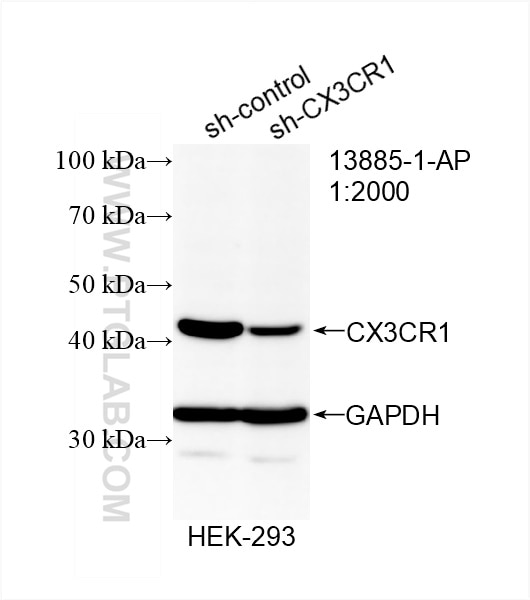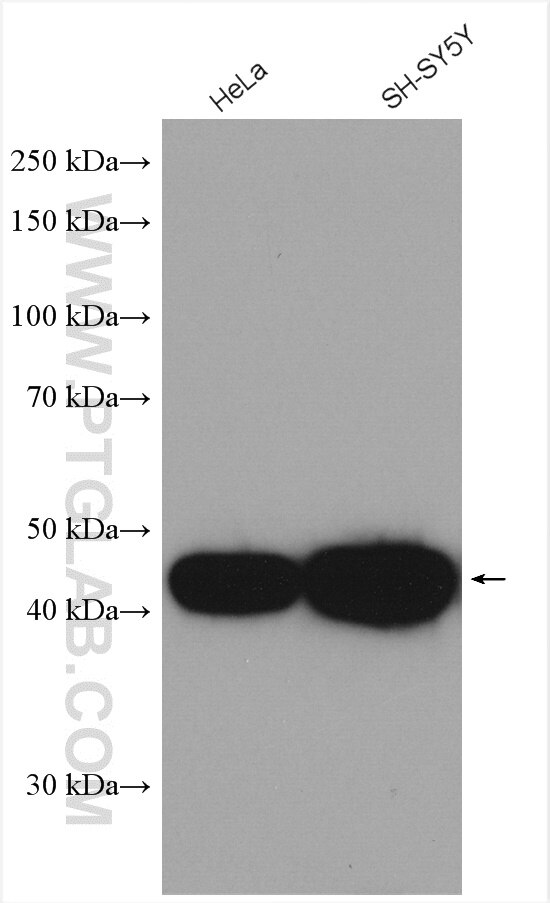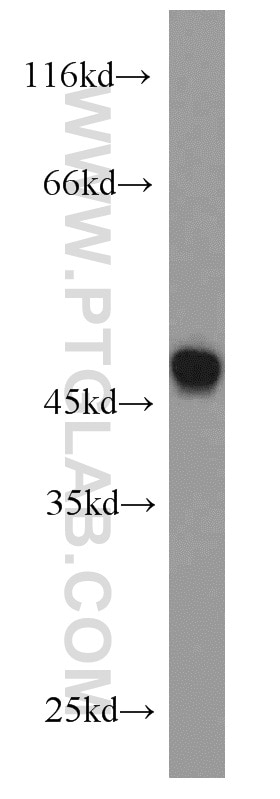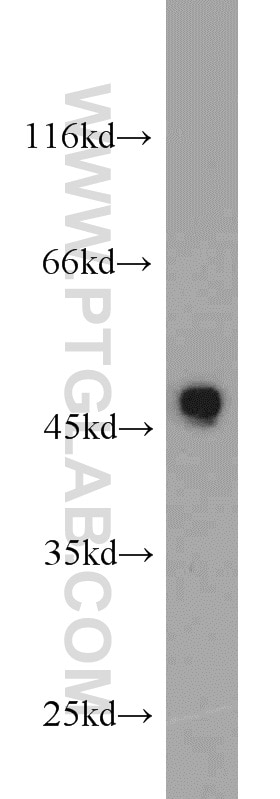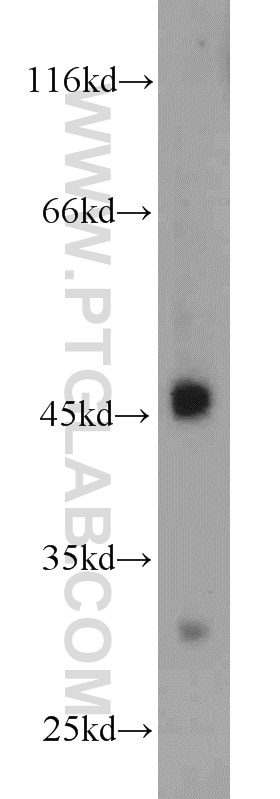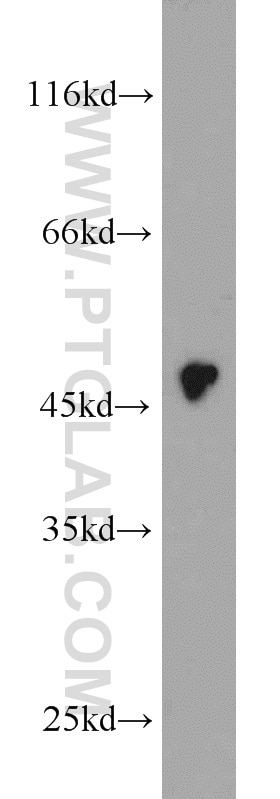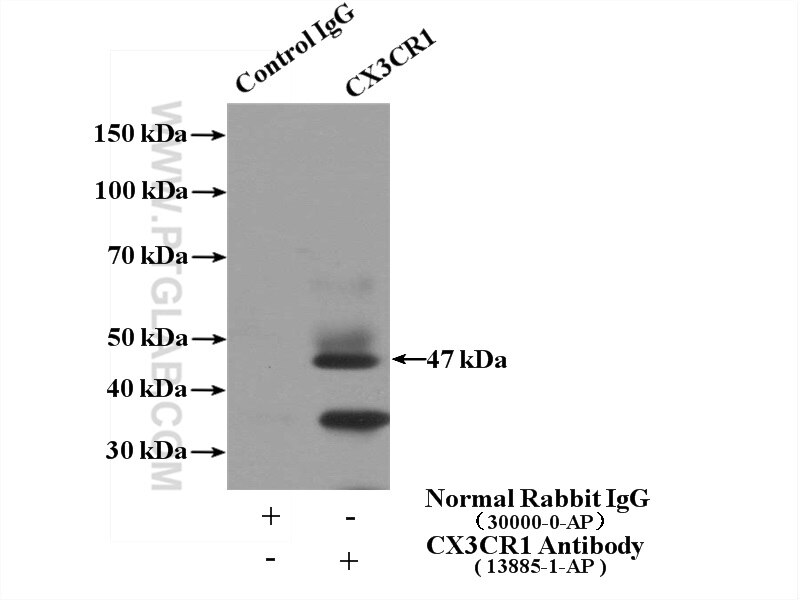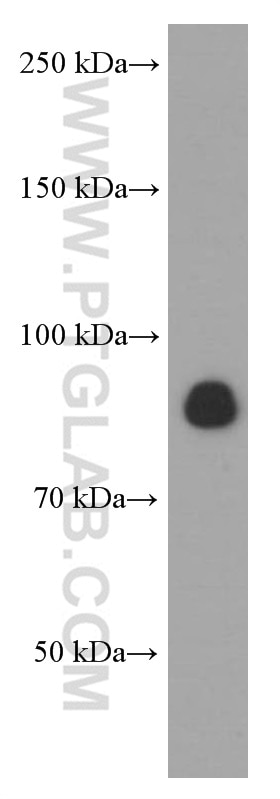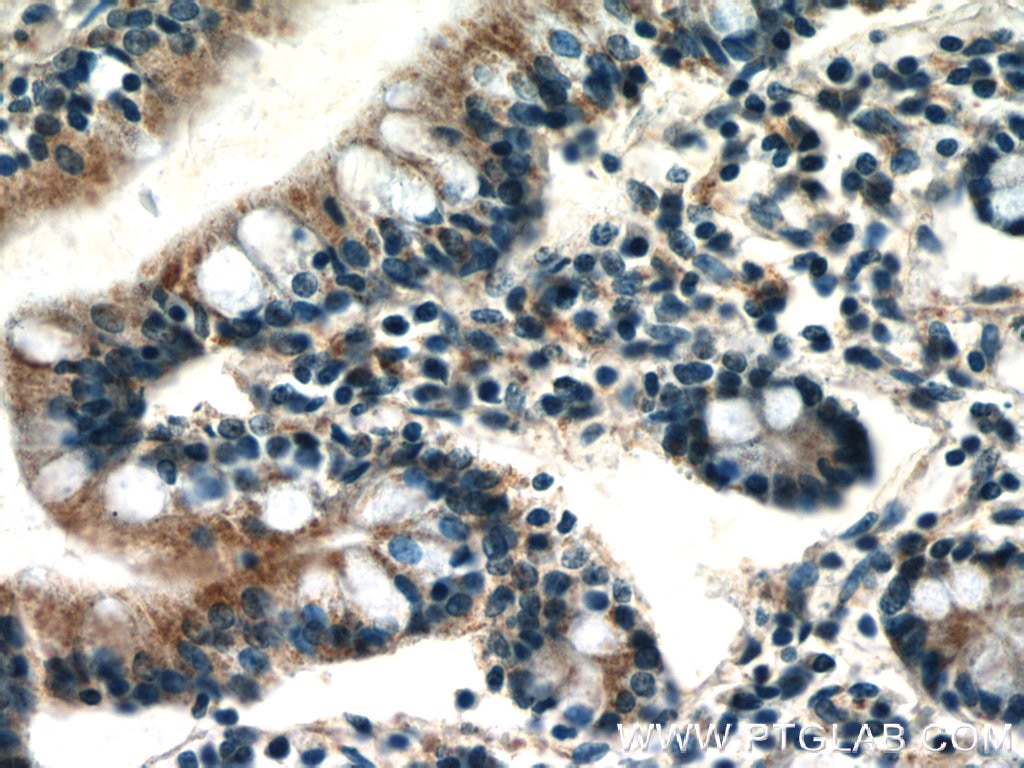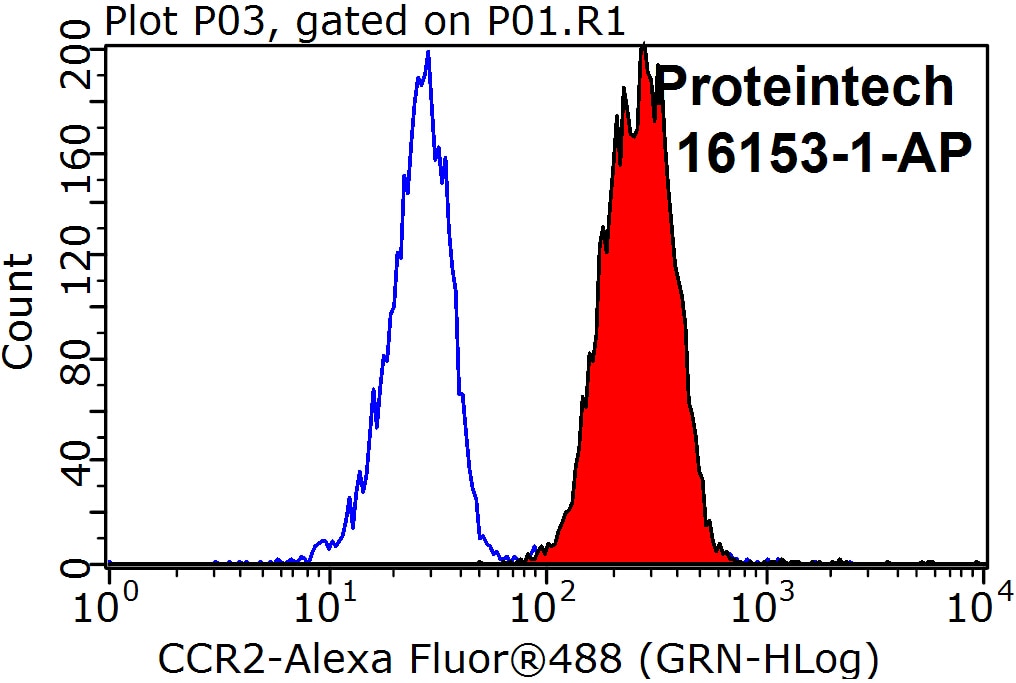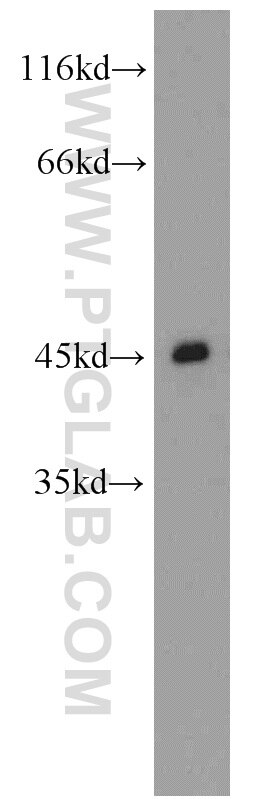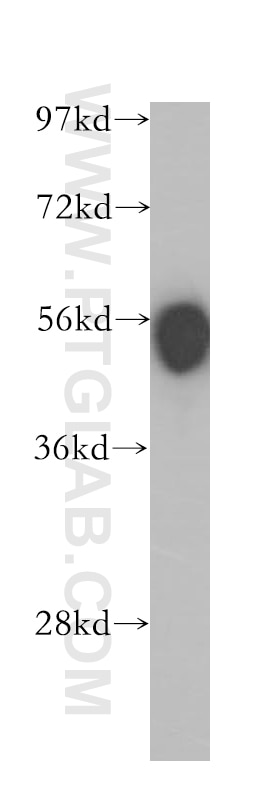- Phare
- Validé par KD/KO
Anticorps Polyclonal de lapin anti-CX3CR1
CX3CR1 Polyclonal Antibody for WB, IP, ELISA
Hôte / Isotype
Lapin / IgG
Réactivité testée
Humain et plus (2)
Applications
WB, IP, IF, IHC, CoIP, ELISA, Cell treatment
Conjugaison
Non conjugué
N° de cat : 13885-1-AP
Synonymes
Galerie de données de validation
Applications testées
| Résultats positifs en WB | cellules HeLa, cellules HEK-293, cellules HL-60, cellules K-562, cellules SH-SY5Y, cellules U-937 |
| Résultats positifs en IP | cellules SH-SY5Y |
Dilution recommandée
| Application | Dilution |
|---|---|
| Western Blot (WB) | WB : 1:1000-1:4000 |
| Immunoprécipitation (IP) | IP : 0.5-4.0 ug for 1.0-3.0 mg of total protein lysate |
| It is recommended that this reagent should be titrated in each testing system to obtain optimal results. | |
| Sample-dependent, check data in validation data gallery | |
Informations sur le produit
13885-1-AP cible CX3CR1 dans les applications de WB, IP, IF, IHC, CoIP, ELISA, Cell treatment et montre une réactivité avec des échantillons Humain
| Réactivité | Humain |
| Réactivité citée | rat, Humain, souris |
| Hôte / Isotype | Lapin / IgG |
| Clonalité | Polyclonal |
| Type | Anticorps |
| Immunogène | CX3CR1 Protéine recombinante Ag4149 |
| Nom complet | chemokine (C-X3-C motif) receptor 1 |
| Masse moléculaire calculée | 40 kDa |
| Poids moléculaire observé | 44-47 kDa |
| Numéro d’acquisition GenBank | BC028078 |
| Symbole du gène | CX3CR1 |
| Identification du gène (NCBI) | 1524 |
| Conjugaison | Non conjugué |
| Forme | Liquide |
| Méthode de purification | Purification par affinité contre l'antigène |
| Tampon de stockage | PBS avec azoture de sodium à 0,02 % et glycérol à 50 % pH 7,3 |
| Conditions de stockage | Stocker à -20°C. Stable pendant un an après l'expédition. L'aliquotage n'est pas nécessaire pour le stockage à -20oC Les 20ul contiennent 0,1% de BSA. |
Informations générales
CX3CR1, also known as GPR13, V28 and fractalkine receptor, belongs to the 7-transmembrane G protein-coupled receptor (GPCR) family. It is expressed on microglia, astrocytes, NK cells, monocytes/macrophages, and a subpopulation of T cells. CX3CR1 is the receptor for fractalkine (CX3CL1) and mediates both its adhesive and migratory functions. It also acts as coreceptor with CD4 for HIV-1 virus envelope protein (in vitro), and some variations in the gene of CX3CR1 lead to increased susceptibility to HIV-1 infection and rapid progression to AIDS. Defects in CX3CR1 are a cause of susceptibility to age-related macular degeneration type 12 (ARMD12).
Protocole
| Product Specific Protocols | |
|---|---|
| WB protocol for CX3CR1 antibody 13885-1-AP | Download protocol |
| IP protocol for CX3CR1 antibody 13885-1-AP | Download protocol |
| Standard Protocols | |
|---|---|
| Click here to view our Standard Protocols |
Publications
| Species | Application | Title |
|---|---|---|
Brain Reactive microglia enhance the transmission of exosomal alpha-synuclein via toll-like receptor 2. | ||
Tissue Cell Analysis of Aβ-induced neurotoxicity and microglial responses in simple two- and three-dimensional human iPSC-derived cortical culture systems | ||
J Control Release Chemoattractants driven and microglia based biomimetic nanoparticle treating TMZ-resistant glioblastoma multiforme. | ||
Nanoscale Calming egress of inflammatory monocytes and related septic shock by therapeutic CCR2 silencing using macrophage-derived extracellular vesicles. | ||
Mol Oncol Platelets are recruited to hepatocellular carcinoma tissues in a CX3CL1-CX3CR1 dependent manner and induce tumour cell apoptosis. | ||
J Nanobiotechnology Biomimetic GBM-targeted drug delivery system boosting ferroptosis for immunotherapy of orthotopic drug-resistant GBM. |
Avis
The reviews below have been submitted by verified Proteintech customers who received an incentive forproviding their feedback.
FH Reyes (Verified Customer) (03-01-2024) | Cx3cr1 antibody (in red) tried on human paraffin brain sections, apparently vesicular while marking my microglia.
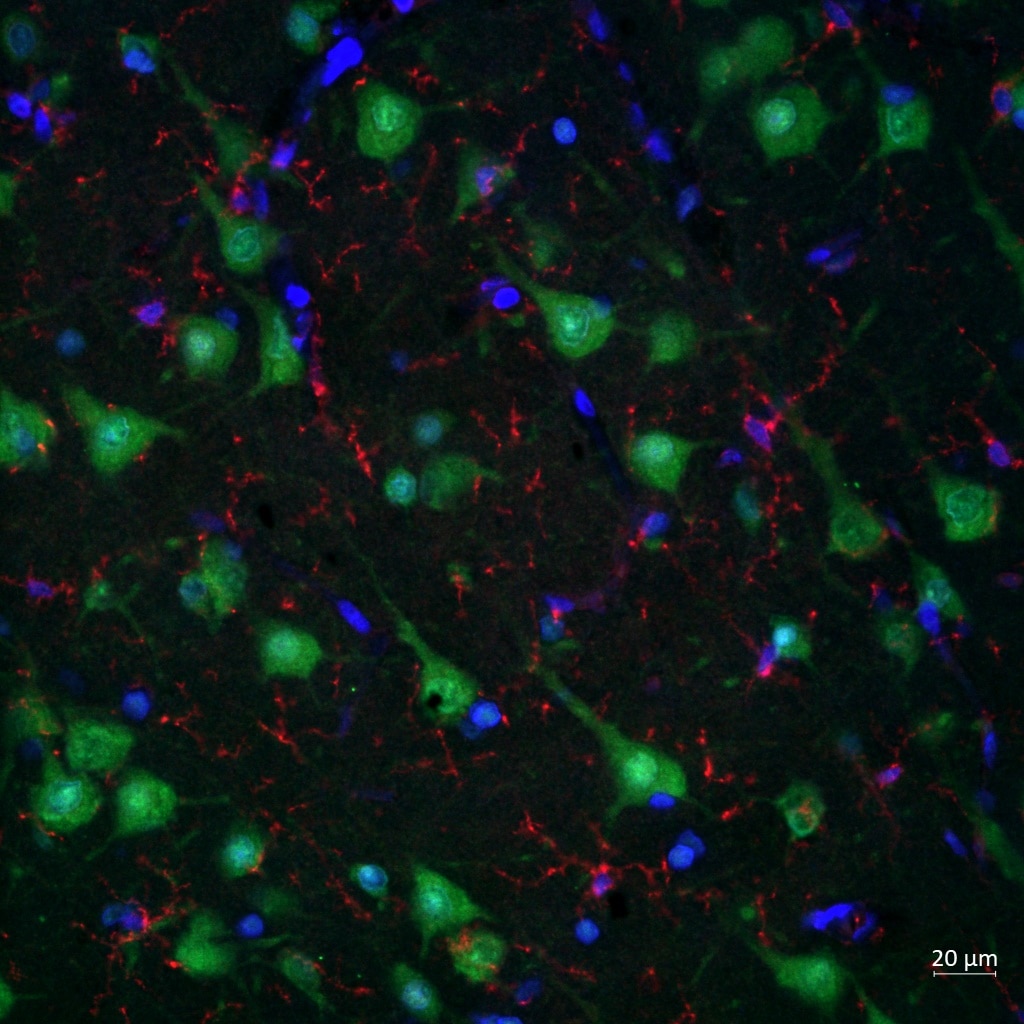 |
FH Ryan (Verified Customer) (06-15-2018) |
|
